Papers by George Hambrecht
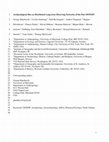
Quaternary International, 2018
Archaeological records provide a unique source of direct data on long-term human-38 environment i... more Archaeological records provide a unique source of direct data on long-term human-38 environment interactions and samples of ecosystems affected by differing degrees of human 39 impact. Distributed long-term datasets from archaeological sites provide a significant contribution 40 to establish local, regional, and continental-scale environmental baselines and can be used to 41 understand the implications of human decision-making and its impacts on the environment and the 42 resources it provides for human use. Deeper temporal environmental baselines are essential for 43 resource and environmental managers to restore biodiversity and build resilience in depleted ecosystems. Human actions are likely to have impacts that reorganize ecosystem structures by reducing diversity through processes such as niche construction. This makes data from archaeological sites key assets for the management of contemporary and future climate change scenarios because they combine information about human behavior, environmental baselines, and biological systems. Sites of this kind collectively form Distributed Long-term Observing Networks of the Past (DONOP), allowing human behavior and environmental impacts to be assessed over space and time. Behavioral perspectives are gained from direct evidence of human actions in response to environmental opportunities and change. Baseline perspectives are gained from data on species, landforms, and ecology over timescales that long predate our typically recent datasets that only record systems already disturbed by people. And biological perspectives can provide essential data for modern managers wanting to understand and utilize past diversity (i.e., trophic and/or genetic) as a way of revealing, and potentially correcting, weaknesses in our contemporary wild and domestic animal populations.
Society for Historical Archaeology, 2016
Quaternary Research, 2019
Arctic Crashes, 2020
Chapter 6 in the Arctic Crashes Smithsonian Publication
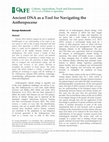
CAFE, 2017
Ancient DNA (aDNA) analysis has led to significant breakthroughs in our understanding of the orig... more Ancient DNA (aDNA) analysis has led to significant breakthroughs in our understanding of the origin of our own species as well as that of many commensal and wild species. New approaches in aDNA research promise to make it a major tool for adaptation to and mitigation of the impacts of the rapidly changing climates of the Anthropocene. This article reviews a number of these new lines of research and their current and potential future contributions to responding to climate change, particularly in two areas: the generation of deeper baseline data on ecological and environmental change, and the tracking and recovery of lost genetic diversity to strengthen the resilience of living species. The article argues that aDNA analysis is creating a powerful new pathway for archeology to engage with the challenges of the Anthropocene. [ancient DNA (aDNA), archeology, zooarcheology, anthropocene, climate change—adap-tation and mitigation]
Quaternary International, 2018
37 Archaeological records provide a unique source of direct data on long-term human-38 environmen... more 37 Archaeological records provide a unique source of direct data on long-term human-38 environment interactions and samples of ecosystems affected by differing degrees of human 39

American Antiquity, 2017
Anthropogenic climate change is increasingly threatening cultural heritage; cultural resource man... more Anthropogenic climate change is increasingly threatening cultural heritage; cultural resource managers, communities, and archaeologists are confronting this reality. Yet the phenomenon is happening over such a wide range of physical and sociocultural contexts that it is a problem too big for any one organization or discipline to tackle. Therefore, the sharing of best practices and examples between the communities dealing with this problem is essential. This article presents examples from communities, cultural resource managers, and archaeologists who are engaging with climate change–based threats to cultural heritage. Our presentation of these international activities follows the US National Park Service (NPS) four-pillar approach to climate-change threats to cultural heritage: science, mitigation, adaptation, and communication. We discuss this approach and then present a number of cases in which communities or institutions are attempting to manage cultural heritage threatened by climate change through these four pillars. This article restricts itself to examples that are taking place outside of the USA and concludes with some general recommendations for both archaeologists and funding entities.
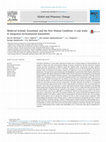
ISSN 0921-8181
This paper contributes to recent studies exploring the longue durée of human impacts on island la... more This paper contributes to recent studies exploring the longue durée of human impacts on island landscapes, the impacts of climate and other environmental changes on human communities, and the interaction of human societies and their environments at different spatial and temporal scales. In particular, the paper addresses Iceland during the medieval period (with a secondary, comparative focus on Norse Greenland) and discusses episodes where environmental and climatic changes have appeared to cross key thresholds for agricultural productivity. The paper draws upon international, interdisciplinary research in the North Atlantic region led by the North Atlantic Biocultural Organization (NABO) and the Nordic Network for Interdisciplinary Environmental Studies (NIES) in the Circumpolar Networks program of the Integrated History and Future of People on Earth (IHOPE). By interlinking analyses of historically grounded literature with archaeological studies and environmental science, valuable new perspectives can emerge on how these past societies may have understood and coped with such impacts. As climate and other environmental changes do not operate in isolation, vulnerabilities created by socioeconomic factors also beg consideration. The paper illustrates the benefits of an integrated environmental-studies approach that draws on data, methodologies and analytical tools of environmental humanities, social sciences, and geosciences to better understand long-term human ecodynamics and changing human-landscape-environment interactions through time. One key goal is to apply previously unused data and concerted expertise to illuminate human responses to past changes; a secondary aim is to consider how lessons derived from these cases may be applicable to environmental threats and socioecological risks in the future, especially as understood in light of the New Human Condition, the concept transposed from Hannah Arendt's influential framing of the human condition that is foregrounded in the present special issue. This conception admits human agency's role in altering the conditions for life on earth, in large measure negatively, while acknowledging the potential of this self-same agency, if effectively harnessed and properly directed, to sustain essential planetary conditions through a salutary transformation of human perception, understanding and remedial action. The paper concludes that more long-term historical analyses of cultures and environments need to be undertaken at various scales. Past cases do not offer perfect analogues for the future, but they can contribute to a better understanding of how resilience and vulnerability occur, as well as how they may be compromised or mitigated.
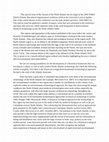
This special issue of the Journal of the North Atlantic has its origin in the 2006 NABO (North At... more This special issue of the Journal of the North Atlantic has its origin in the 2006 NABO (North Atlantic Biocultural Organization) conference held at the Université Laval in Québec. One of the central themes of this conference was the early modern period (c.1500-1800 CE). This special issue has gathered a number of papers, some that were presented at the conference and many that were not, which represent some of the work being done in historical/post-medieval archaeology across the North Atlantic today. The regions and approaches of the authors published in this issue reflect the variety and diversity of methodologies and subjects open to Archaeologists working on the early modern North Atlantic. They also illustrate the cultural and ecological diversity of the region itself. The North Atlantic region is, as we define it, the northern-temperate, boreal and sub-arctic areas of North America and Europe that extend from the edge of the Gulf of St Lawrence to the northeast across Labrador and Greenland, Iceland and then touching on the Faroes, the west and north coasts of the British Isles and Ireland, the Shetlands, and finally Northern Norway far above the Arctic Circle. One common theme to this region is the influence of the North Atlantic Drift. This is meant to be a loosely defined region without strict borders highlighting the area's cultural and environemental interconnectedness. We see two strong possibilities for the development of a theoretical framework that can encompass a subject as vast as early modern North Atlantic archaeology and which the following articles exemplify. First there is the historical ecological/environmental archaeological approach. Second is the work of the Atlantic historians. There has been a great deal of substantial and productive work done in the environmental archaeology of the North Atlantic (for example, McGovern et al. 2007). It is often hard to ignore the environmental variables in this region and a number of contributions in this volume work explicitly within an environmental archaeological approach. We hope that showcasing the unique conditions that North Atlantic post-medieval archaeologists must work within, especially the climatic parameters, will effect the larger practice of historical archaeology throughout the world. The work within this region helps address a void pointed out by a number of scholars, namely the lack of environmental archaeological approaches in historical archaeology (Crumley 1994; Deagan 1996; Mrozowski 2006). A historical ecological approach to the archaeology of this region has had much success in the study of both the medieval European as well as the pre-Columbian western North Atlantic. This scholarship has demonstrated that such an approach has great potential for the highly interconnected post-Columbian Atlantic world (Cronon 1983; Crosby 2004; McGovern et al. 2007; Woollett 2007). The potential in the North Atlantic in later time periods is that the high resolution climate proxy data (such as ice and sea cores and tephrochronology) becomes supplemented with the torrent of documents and the refinements in dating and distribution that comes with the huge increase in finds (esp. pottery) in the early modern period. Later historical periods with richer data sets can allow for a historical ecological approach that is not environmentally deterministic, but fully recognizes the multiple interconnections of humans and nature in this critical period of rapid social and environmental
This article presents results of a preliminary analysis of mammal bones from one context in an ea... more This article presents results of a preliminary analysis of mammal bones from one context in an early modern midden at the Episcopal farm of Skálholt, headquarters for one of two Episcopal sees of Iceland (AD 1056 to 1785). Since 2001, excavations directed by Gavin Lucas of the Archaeological Institute of Iceland (FSI) have produced large collections of early modern, early 17 th to late 18 th centuries, artifacts and bone from a complex of structures which included the Bishop's house, a boy's school, and the domestic infrastructure of this large,
This paper presents the bulk of existing early modern Icelandic zooarchaeological data together f... more This paper presents the bulk of existing early modern Icelandic zooarchaeological data together for the fi rst time. The early modern period in Iceland was generally a time of great stress and hardship. These zooarchaeological data present a view of the responses to these hard times and suggest, contrary to a number of historical interpretations, that the people of Iceland often adapted to harsher conditions in dynamic ways. Given the growing effort in archaeology for this period in Iceland as well as the rest of the North Atlantic, these data are presented in the hope that it will stimulate further work and facilitate larger Atlantic comparisons.
This paper follows the lead of the increasing numbers of scholars utilizing the methods and theor... more This paper follows the lead of the increasing numbers of scholars utilizing the methods and theory of environmental archaeology within historical archaeology. This paper addresses the issue of "modernity" in early modern Iceland through the analysis of faunal assemblages from historic sites in Iceland. It examines the idea of modernity through the ideas of commoditization of animals as well as the improvement of domestic animals as seen through these faunal assemblages. There are a number of possible faunal indications of processes associated with modernity in the existing historic assemblages of Iceland though at least some of these have deep roots in the medieval period. Examining the idea of modernity through the faunal assemblages of historic-period Iceland both help refine the idea of modernity as well as reveal the medieval roots of much of what we term "modern".
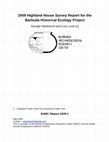
Contact – ghambrecht@gmail.com This is a product of the Human Ecodynamics Research Center (HERC) ... more Contact – ghambrecht@gmail.com This is a product of the Human Ecodynamics Research Center (HERC) and the Global Human Ecodynamics Alliance (GHEA). Highland House was an 18 th century complex built by the Codrington family of England, the leaseholders of Barbuda from 1685 until 1870. At least some of the compound was also built by sub-leasees, William Byam and Samuel Martin 1746-1761(Watters and Nicholson 1982). William Byam was said to have died and been buried on Barbuda in 1755 (Debrett 1824) but it is unlikely that any of the Codrington family ever lived on the island for any great length of time. Highland House was built as a country house, possibly a hunting lodge, for the Codringtons. William Codrington, son of John Codrington, one of the original signers of the Barbuda/Codrington lease, wrote a letter to (presumably) one of his managers on Barbuda asking him to plant a wide variety of trees and fruit on the island, as well as to preserve the game. In this letter he says that ...
The Holocene, 2015
The offshore islands of the North Atlantic were among some of the last settled places on earth, w... more The offshore islands of the North Atlantic were among some of the last settled places on earth, with humans reaching the Faroes and Iceland in the late Iron Age and Viking period. While older accounts emphasizing deforestation and soil erosion have presented this story of island colonization as yet another social-ecological disaster, recent archaeological and paleoenvironmental research combined with environmental history, environmental humanities, and bioscience is providing a more complex understanding of long-term human ecodynamics in these northern islands. An ongoing interdisciplinary investigation of the management of domestic pigs and wild bird populations in Faroes and Iceland is presented as an example of sustained resource management using local and traditional knowledge to create structures for successful wild fowl management on the millennial scale.
Page 1. Introduction Synthetic work over the past decade by James Barrett and his collaborators (... more Page 1. Introduction Synthetic work over the past decade by James Barrett and his collaborators (1997, 2000, 2001, 2004, 2005, this volume) has made major contributions to our un-derstanding of the origins and spread of ...
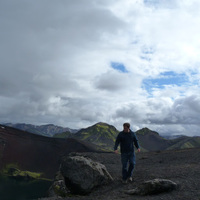




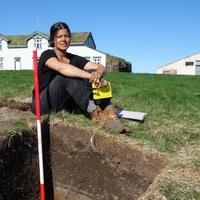



Uploads
Papers by George Hambrecht